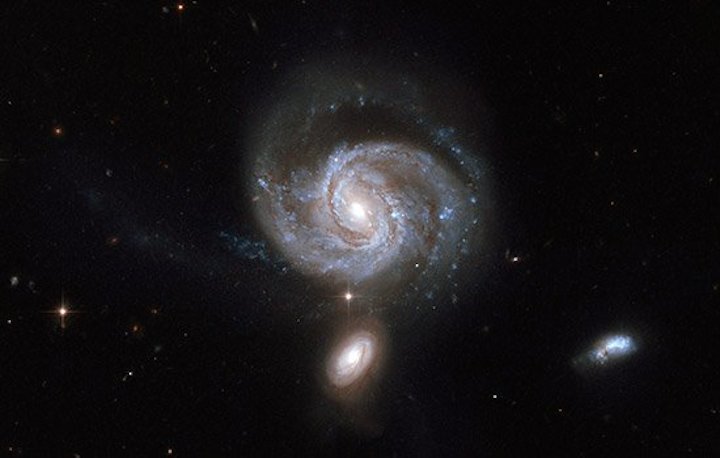19.09.2017
When radio galaxies collide, supermassive black holes form tightly bound pairs
RIT contributes to study published in ‘Nature Astronomy’

A study using multiple radio telescopes confirms that supermassive black holes found in the centers of galaxies can form gravitationally bound pairs when galaxies merge.
The paper published in the Sept. 18 issue of Nature Astronomy sheds light on a class of black holes having a mass upwards of one million times the mass of the sun. Supermassive black holes are expected to form tightly bound pairs following the merger of two galaxies.
“The dual black hole we found has the smallest separation of any so far detected through direct imaging,” said David Merritt, professor of physics at Rochester Institute of Technology, a co-author on the paper.
The supermassive black holes are located in the spiral galaxy NGC 7674, approximately 400 million light years from earth, and are separated by a distance less than one light year. The study was led by Preeti Kharb, from the National Center for Radio Astrophysics at the Tata Institute of Fundamental Research and co-authored by Dharam Vir Lal, also at the National Center for Radio Astrophysics, and Merritt at RIT.
“The combined mass of the two black holes is roughly 40 million times the mass of the Sun, and the orbital period of the binary is about 100,000 years,” Merritt said.
A class of smaller black holes form when massive stars explode as supernovae. A collision of stellar mass black holes led to the landmark discovery of gravitational waves in 2015 using the Laser Interferometer Gravitational-wave Observatory. The black holes were approximately 29 and 36 times the mass of the sun and collided 1.3 billion light years away
“A supermassive binary generates gravitational waves with much lower frequency than the characteristic frequency of stellar-mass binaries and its signal is undetectable by LIGO,” Merritt said.
To simulate a highly sensitive detector, the researchers used a method to make radio telescopes around the world work together as a single large telescope and achieve a resolution roughly 10 million times the angular resolution of the human eye.
“Using very long baseline interferometry techniques, two compact sources of radio emission were detected at the center of NGC 7674; the two radio sources have properties that are known to be associated with massive black holes that are accreting gas, implying the presence of two black holes,” Merritt said.
The galaxy hosting the binary supermassive black hole loudly emits radio waves. The detection confirms a theory predicting the presence of a compact binary in a radio galaxies bearing a “Z” shape.
“This morphology is thought to result from the combined effects of the galaxy merger followed by the formation of the massive binary,” Merritt said.
Quelle: University Rochester Institute of Technology.
